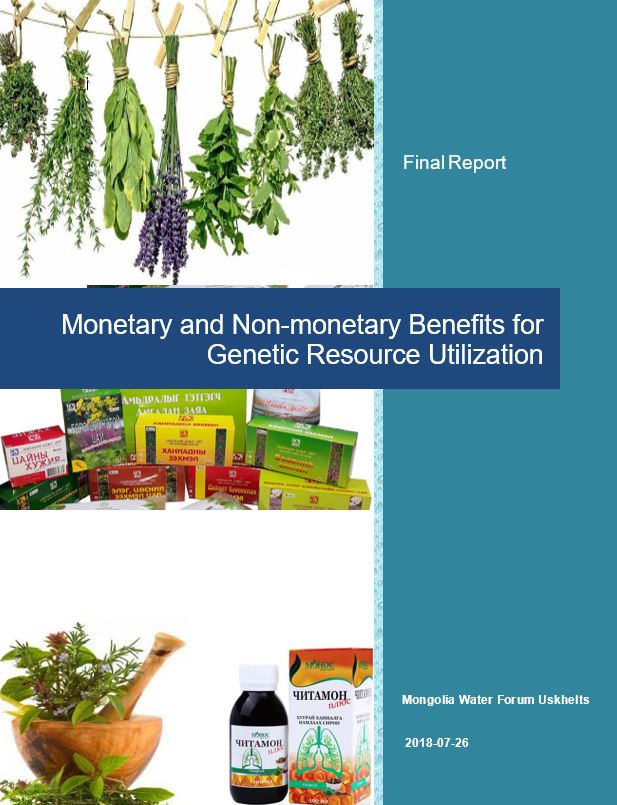During 2017-2019, we conducted a new research study on “Monetary and Non-monetary Benefits for Genetic Resource Utilization statuses in Mongolia, which was funded by UNDP Mongolia in cooperation with the Ministry of Environment (MoET) and Tourism of Mongolia. The final study report has been developed and submitted to the MoET.
Equitable sharing of benefits from the utilization of biological and genetic resources is one of the requirements for all countries ratified the Convention on Biological Biodiversity.
The Convention on Biological Diversity was opened for signature on 5 June 1992 at the United Nations Conference on Environment and Development (the Rio “Earth Summit”) and entered into force on 29 December 1993. It’s three objectives are the conservation of biological diversity, the sustainable use of its components and the fair and equitable sharing of benefits arising from the utilization of genetic resources. To further advance the implementation of the third objective, the World Summit on Sustainable Development (Johannesburg, September 2002) called for the negotiation of an international regime, within the framework of the Convention, to promote and safeguard the fair and equitable sharing of benefit ts arising from the utilization of genetic resources.
By the convention, the full rights for utilization of genetic resources within the given country belong only to their government. Thus, the Convention is the only international instrument comprehensively addressing biological diversity and utilization of genetic resources through the country’s legal frameworks.
After several years of negotiation, the Nagoya Protocol on Access to Genetic Resources and the Fair and Equitable Sharing of Benefit ts Arising from their Utilization to the Convention on Biological Diversity was adopted at the tenth meeting of the Conference of the Parties on 29 October 2010, in Nagoya, Japan. Mongolia has ratified the Nagoya Protocol in 2013 and in October 2014 becomes an official member.
The Protocol significantly advances the Convention’s third objective by providing a strong basis for greater legal certainty and transparency for both providers and users of genetic resources. Specific obligations to support compliance with domestic legislation or regulatory requirements of the Party providing genetic resources and contractual obligations reflected in mutually agreed terms are a significant innovation of the Protocol. These compliance provisions, as well as provisions establishing more predictable conditions for access to genetic resources, will contribute to ensuring the sharing of benefits when genetic resources leave a Party providing genetic resources.

